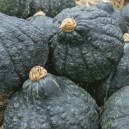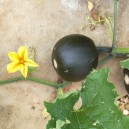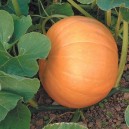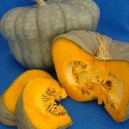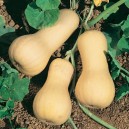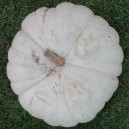
Welcome, Log in
Product Categories
-
Heirloom & OP Seed
- Cool Weather Crops
- Warm Weather Crops
- Beans
- Beetroot
- Brassicas
- Carrots
- Chard
- Corn/Maize
- Cucumbers
- Eggplant (Aubergine)
- Leeks
- Lettuce
- Melons
- Okra
- Onions
- Parsnips
- Peas
- Peppers & Chillies
- Radish
- Spinach
- Squash & Pumpkins
- Tomatoes
- Turnips
- Unusual / Exotic
- Herbs & Spices
- Fruits & Berries
- Value Packs
- View All Seed
- Gift Vouchers
Winter SquashThere are 6 products.
Please scroll down or click here to view the product list
GROWING INSTRUCTIONS FOR WINTER SQUASH
Binomial Name: Cucurbita
Varieties: Waltham Butternut, Hundredweight Pumpkin, Flat White Boer Pumpkin, Queensland Blue Pumpkin
Start: Seed or seedling
Germination: 5 - 10 days, 15°C to 40°C
Seed Life (viability): 6 years
Soil: Well drained, high fertility
Sunlight: Full sun
Sow Seeds: 15 - 30cm apart
Transplant/Thin to: 45 - 90cm apart
Ave. Days to Harvest: 90 - 100
Good Companions: Beans, lettuce, marjoram, nasturtium, peas, petunia, radish, sunflower, corn, yarrow
Bad Companions: Potato, sage
Winter squash are easy to grow -- if you have the space. In addition to the familiar butternut and acorn squashes, varieties come in a staggering diversity of fruit size, shape and color.
Sowing & Planting: Winter squashes like warm soil and are very sensitive to frost so don’t be in a rush to plant too early in spring. Wait until danger of frost has passed and soil has warmed to about 21°C, or about 2 weeks after the last frost date.
Unless you are trying to grow a long-season variety in an area that gets early frosts there’s really no need to start winter squash inside. Instead, direct seed 1 to 3cm deep into hills (which warm and drain earlier in the season) or rows. Sow 4 to 5 seeds per hill. Space hills about 120 to 240cm apart, depending on the size of the fruit the larger the expected size of the squash, the larger the vine and the farther apart you should space the hills).
When the plants are 5 to 8cm tall, thin to 2 to 3 plants per hill by snipping off unwanted plants without disturbing the roots of the remaining ones. In rows, sow seeds 15 to 30cm apart in rows 120 to 240cm apart. Snip off plants to thin to one plant every 45 to 90cm.
If you need to start plants early, plant inside in 5 to 10cm pots or cells 3 to 4 weeks before transplanting outside. Sow 3 or 4 seeds per pot and thin to one or two plants by snipping off the weaker plants to avoid damaging the roots of those that remain. Harden off by cutting back on water and reducing temperature before transplanting. Plant transplants out in the garden at the same final spacings above after all danger of frost has passed.
Growing: Use row covers to protect plants early in the season and to prevent any insect problems. Remove the covers before flowering, to allow pollination by insects, or as soon as hot weather arrives.
Tip: Squash plants have both male and female flowers. The male flowers often blossom first, sometimes as much as two to three weeks before any female flowers start to appear. You will recognise the female flowers once they finally blossom as they form on the ends of the immature fruits and, once pollinated, then fall off as the fruit develops. The first fruits can sometimes be wrinkled, turn black or rot due to poor pollination.
Mulching the plants will help retain moisture in the soil and suppress weeds. Mounding soil around the base of the plants can discourage squash borers from laying eggs. Scan for pests every time you go out into the garden. Squash bugs begin to infest the vines as soon as the blossoms appear. They are usually in large groups and can damage the plant and the mature fruit.
Check with your local garden center or nursery for the proper course of treatment for these pests because the sooner you get rid of them, the healthier your squash plants will be. Mildew can also be a problem on squash plants. A copper soap spray or a homemade solution of 1 part milk to 10 parts water will help to keep mildew at bay.
At the end of the season, remove all of the vines to reduce the chances of any mildew spreading.
Harvesting: When the stems turn a light green-yellow color the squash should be fully ripe. The rind will be thick and tough. Cut, do not pull, the ripe fruit from the plant. 5 to 8cm of stem must remain for proper storing. This may increase the sugar content.
-
R 25.00Add to cart More Details
Available -
R 25.00Out of Stock More Details
Coming Soon -
R 25.00Out of Stock More Details
Coming Soon -
R 25.00Out of Stock More Details
Coming Soon -
R 25.00Out of Stock More Details
Coming Soon -
R 25.00Add to cart More Details
Available
